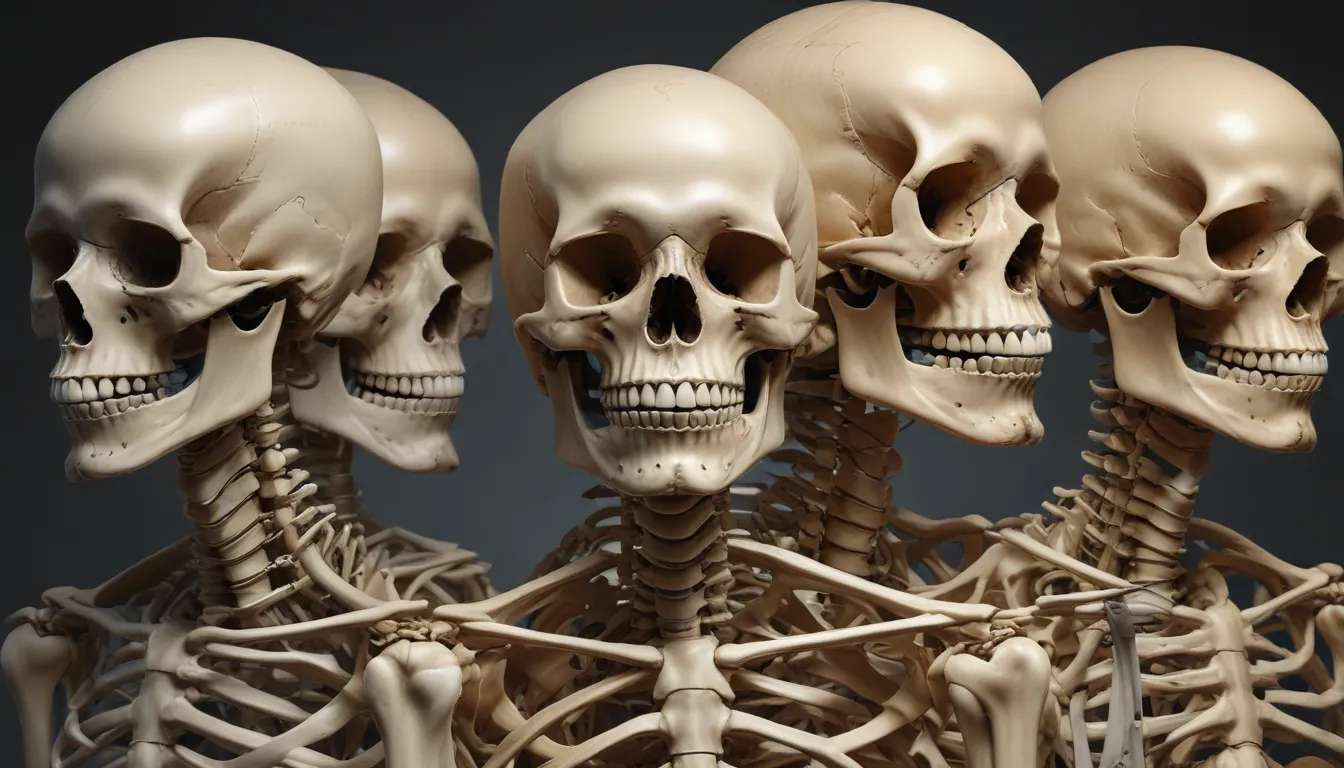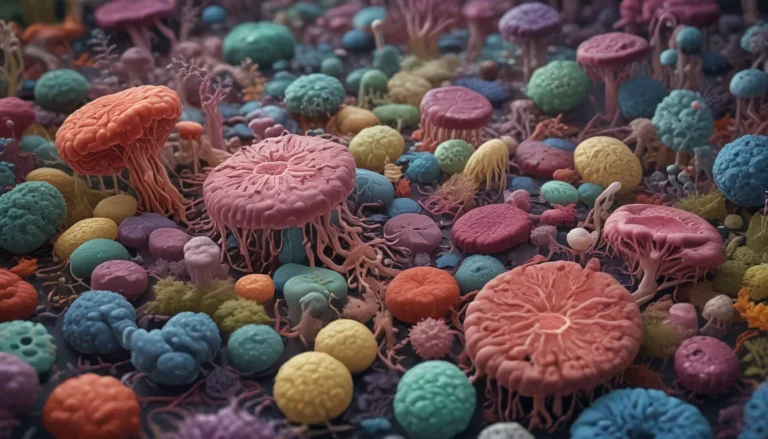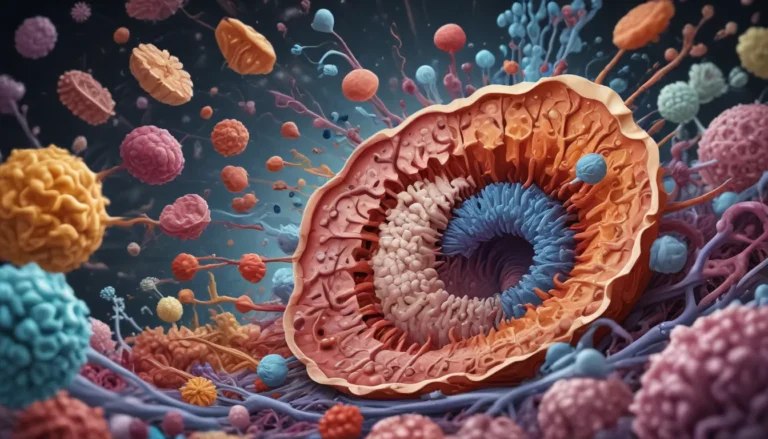A Note About Images: The images used in our articles are for illustration purposes only and may not exactly match the content. They are meant to engage readers, but the text should be relied upon for accurate information.
The skeletal system is an extraordinary marvel of the human body, providing essential structure, support, and protection for all our organs and tissues. While it may often go unnoticed, the skeletal system is anything but ordinary. It comprises a complex network of bones, joints, and connective tissues that work together seamlessly to keep us upright and enable our bodies to move. In this article, we will take a deep dive into the fascinating world of the skeletal system and reveal 11 mind-blowing facts that showcase its significance and intricacies. From the surprising abilities of our bones to the number of bones in the human body, get ready to be amazed by the wonders of our skeletal system. So, let’s embark on this journey and explore the awe-inspiring facts that make the skeletal system one of the most captivating aspects of human biology.
Unveiling the Marvel of the Skeletal System
The skeletal system, composed of bones, is incredibly robust and durable. The femur, also known as the thigh bone, stands out as one of the toughest bones in the human body, capable of withstanding immense pressure. This remarkable strength is essential for supporting our bodies and providing the necessary framework for movement.
Delving Into the Complexity of Bones
It may come as a surprise that an adult human body consists of over 200 bones. These bones vary in shape and size, working collectively to offer structural support and safeguard our vital organs. Each bone plays a crucial role in ensuring the overall functionality of the skeletal system, emphasizing the intricate design and coordination of this essential body system.
The Dynamic Function of Bone Marrow
One of the most remarkable functions of the skeletal system is its ability to produce blood cells. Nestled within certain bones, such as the femur and sternum, bone marrow serves as a vital source of red blood cells, white blood cells, and platelets. This ongoing process of blood cell production underscores the crucial role that bones play in maintaining overall health and well-being.
Embracing the Continuous Renewal of Bone Tissue
Our bodies are in a constant state of renewal, especially when it comes to bone tissue. Through a process known as remodeling, old or damaged bone is broken down by specialized cells called osteoclasts, while new bone is formed by osteoblasts. This dynamic cycle of bone regeneration ensures the strength and integrity of our skeletal structure.
The Importance of Mineral Storage in Bones
In addition to blood cell production, bones serve as a reservoir for essential minerals such as calcium and phosphorus. These minerals are vital for various bodily functions, including muscle contraction, nerve signaling, and maintaining bone strength. The skeletal system plays a pivotal role in storing and regulating the levels of these essential minerals to support overall health.
Unveiling the Smallest Bone in the Human Body
Despite its petite size, the stapes bone, located in the middle ear, holds tremendous importance. This tiny bone is crucial for transmitting sound vibrations from the eardrum to the inner ear, highlighting the intricate and specialized functions of each bone within the human body.
Discovering the Neck Bone Connection
In a surprising revelation, both humans and giraffes share the same number of neck bones, known as cervical vertebrae. The difference lies in the size and structure of these bones, allowing giraffes to exhibit their distinctive long necks. This intriguing similarity underscores the evolutionary connections between different species.
Unlocking the Resilience of Bones
Contrary to popular belief, bones are stronger and less brittle than steel. This remarkable resilience is attributed to the unique composition of bones, which combines collagen fibers for flexibility and hydroxyapatite crystals for hardness. The impressive structure of bones ensures their durability and ability to withstand various forces.
Exploring the Complexity of the Human Skull
The intricate design of the human skull consists of 22 different bones, including the mandible, maxilla, and various cranial bones. These bones serve a dual purpose of protecting the delicate brain and providing structural support for the face and head. The complex interplay of these bones highlights the sophistication of the skeletal system.
Unraveling the Healing Potential of Bone Fractures
When a bone fractures, the body initiates a natural repair process that can result in the formation of stronger and denser bone tissue. This remarkable ability of bones to regenerate and heal themselves underscores their resilience and adaptive nature. The recovery from a fracture can lead to the formation of new bone that is more resistant to future injuries.
Nurturing Calcium Balance Through Bones
The skeletal system plays a crucial role in regulating calcium levels in the body, a process known as calcium homeostasis. Bones release calcium into the bloodstream when levels are low, while storing excess calcium when levels are high. This delicate balance ensures the optimal functioning of various bodily processes and underscores the vital contribution of bones to overall health.
Conclusion: Embracing the Marvels of the Skeletal System
In conclusion, the skeletal system emerges as a captivating and intricate component of the human body. Its functions extend far beyond providing support and protection, encompassing blood cell production, mineral storage, and immune system support. By gaining a deeper understanding of the skeletal system and its complexities, we can cultivate a greater appreciation for the marvels of human biology.
By prioritizing proper nutrition, exercise, and regular check-ups, we can nurture the longevity and vitality of our bones. The skeletal system stands as a testament to the ingenuity of nature, showcasing the harmonious interplay of structure and function within the human body. As we continue to unravel the mysteries of the skeletal system, we embark on a journey of discovery and enlightenment that enriches our understanding of our own anatomy.
FAQs: Unveiling Insights Into the Skeletal System
- How many bones are in the adult human skeletal system?
-
The adult human skeletal system consists of 206 bones.
-
Can bones repair themselves?
-
Yes, bones possess the remarkable ability to self-repair. Specialized cells called osteoblasts play a key role in depositing new bone tissue during the healing process.
-
What are the main functions of the skeletal system?
-
The main functions of the skeletal system include providing structural support, protecting vital organs, facilitating movement, producing blood cells, and storing essential minerals.
-
How does exercise impact the skeletal system?
-
Regular exercise, particularly weight-bearing activities like walking or running, helps strengthen bones, increase bone density, and reduce the risk of conditions like osteoporosis.
-
Can the skeletal system influence the immune system?
- Yes, the skeletal system contributes to immune function through bone marrow, which produces immune cells and plays a critical role in the body’s defense mechanisms.
Join Us on a Journey of Discovery
At thenurseslab.com, our dedication to delivering trustworthy and engaging content drives us to explore the wonders of human anatomy and physiology. Each fact shared on our site reflects the diverse insights and knowledge contributed by real users like you. Our commitment to accuracy and reliability ensures that every piece of information we provide is not only captivating but also credible. Trust in our pursuit of quality and authenticity as we delve into the fascinating world of the human body and unravel its remarkable complexities.






